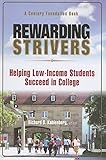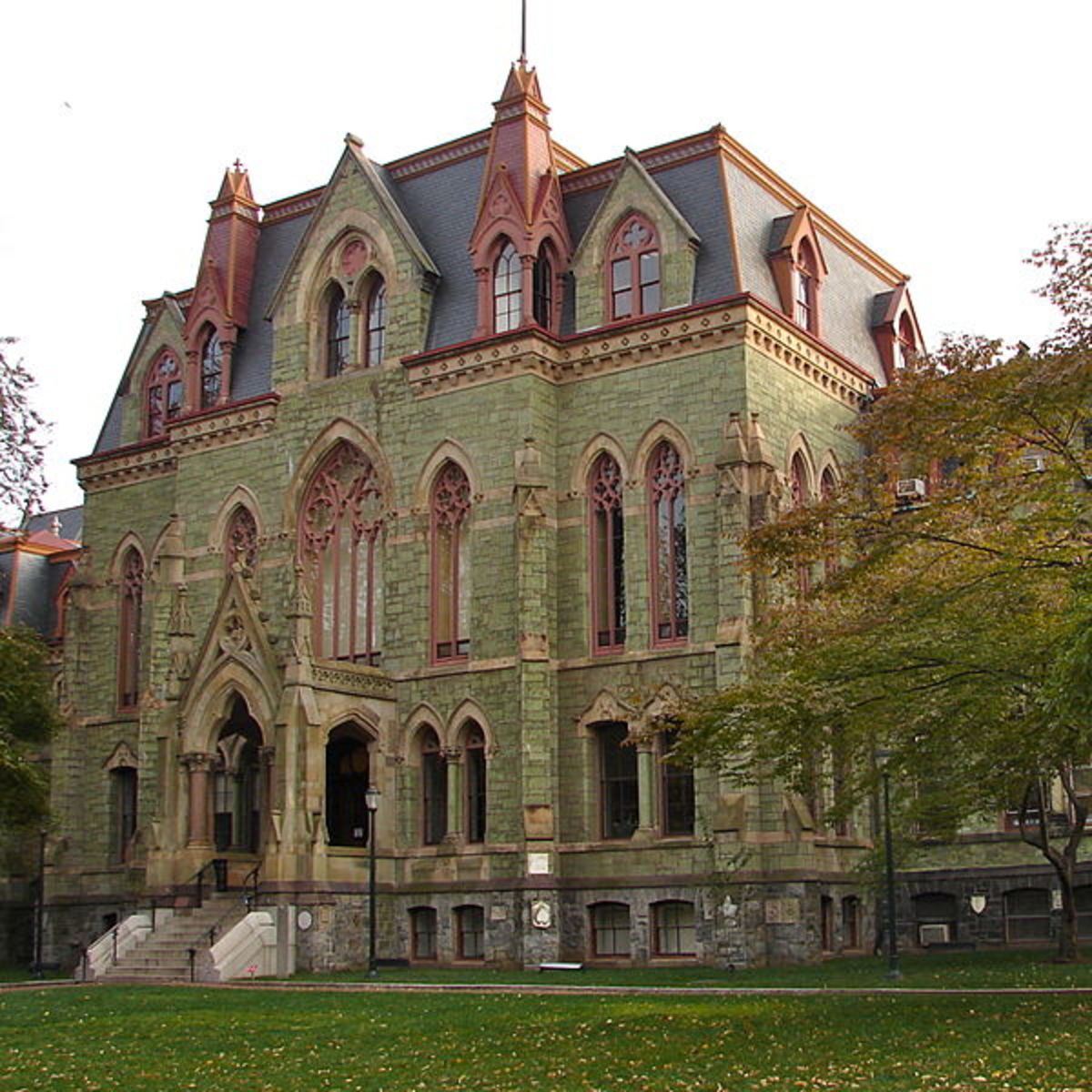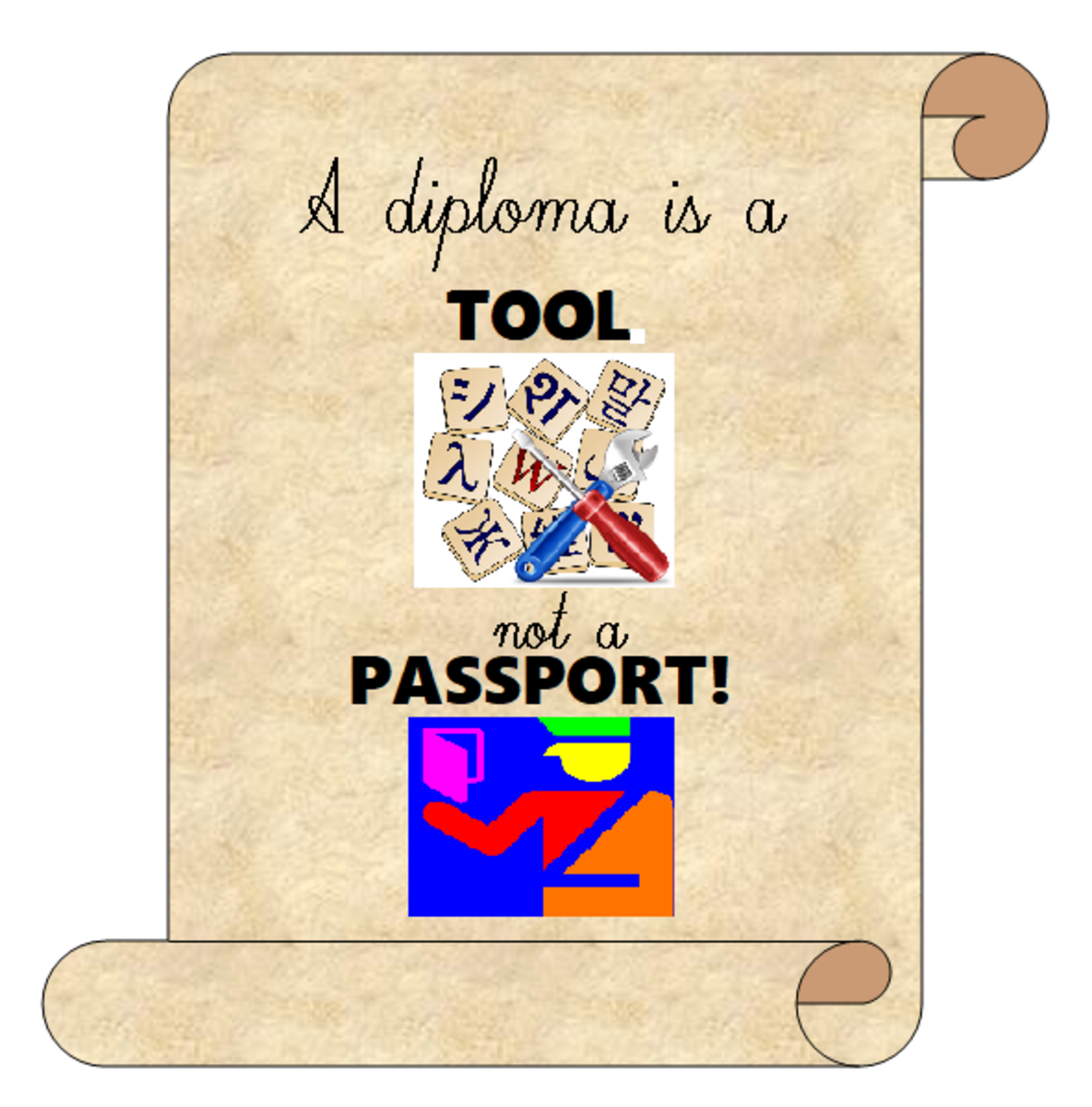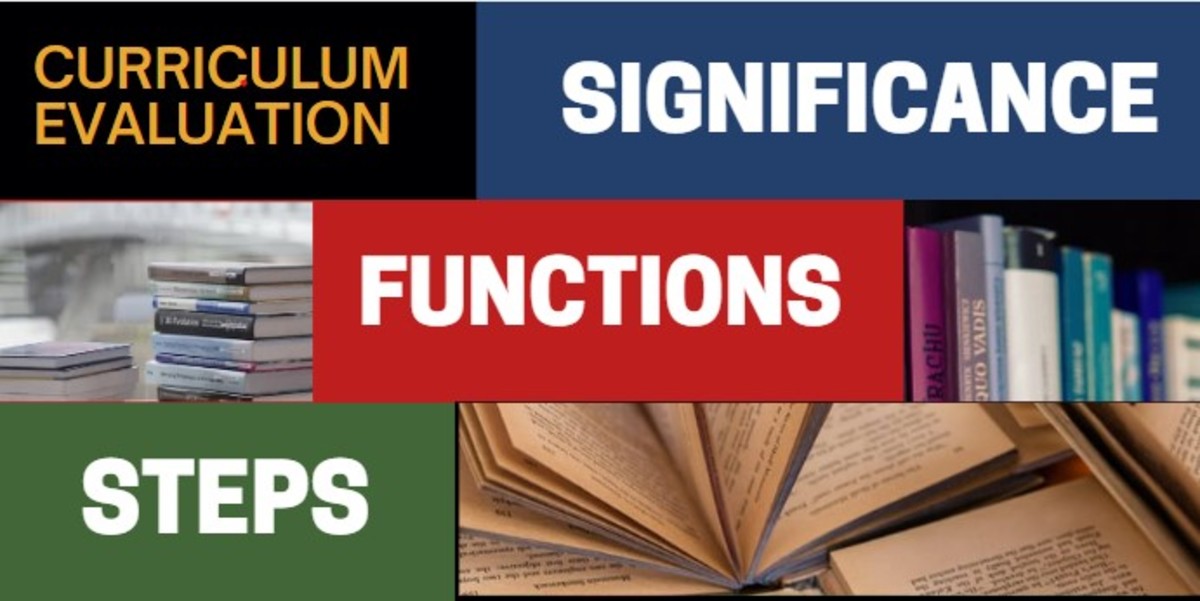The Inequities Within Higher Education: What They Are, and How They Can Be Resolved
A selection of experiences of low-income undergraduates:
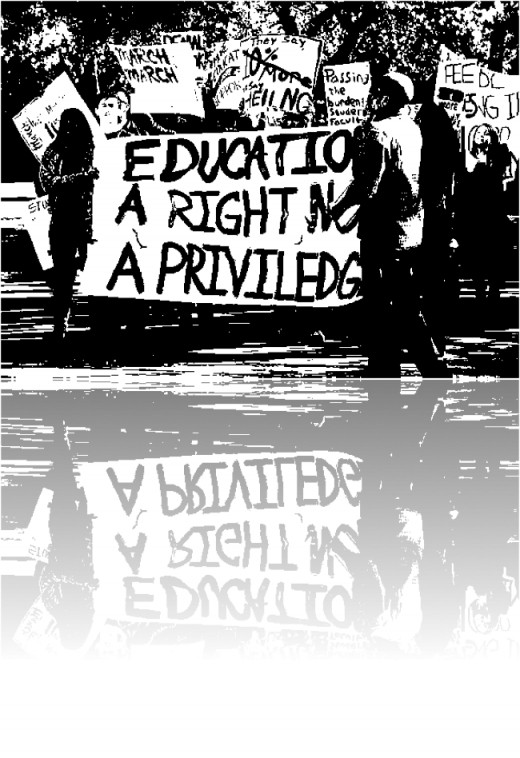
Inherent Inequities
The progression of modern society has been a biased process, favoring those of greater socioeconomic standing while further impairing the disadvantaged. For the latter demographic, the premiere hope of upward social mobility lies with higher education (Carnevale & Strohl, 2011). Yet, colleges and universities have only proven to compound the social inequities suffered by the American populace. Whether by intention or pure happenstance, these academic institutions have constructed obstacles, including staggering financial burdens and increasingly complex admission processes, which discourage students of lower-socioeconomic standing from pursuing continuing education. Coupled with the overall lack of cultural capital and academic preparedness, as well as the absence of proper recruitment programs and guidance (Long & Riley, 2007), low-income students continue to struggle, not solely for success within the realm of higher education, but for the preeminent goal of social betterment.
Past Research on the Low-Income Student
Over past decades, the polarization on college campuses has evidenced no respite, although public funding through government provisions, such as the G.I. Bill, succeeded in facilitating enrollment among impoverished persons (Walpole, 2003). The steady rise in university admissions (Carnevale & Strohl, 2011), has nevertheless failed to extend to elite institutions, where those of the lowest income quartile comprise less than ten percent of the undergraduate demographic (Marx, 2011). Instead, access to higher education for the disadvantaged populace has been restricted to community colleges and less selective four-year universities, where a student’s income bracket commonly serves as a predictor for academic success (Astin & Oseguera, 2004).
The hierarchical constitution of a student’s college experience remains a dominant social force after graduation as well. Individuals of greater economic status, who are generally products of more exacting universities, enter into lucrative professional careers, whereas individuals of less selective institutions and two-year colleges hold mid-level or moderately skilled positions, respectively (Carnevale & Strohl, 2011). A student’s capacity at academic success is although not determined solely by the institutionalized opportunities of a certain economic class. Instead, individual agency, reflective of habitus, or the dispositions that consequently dictate a person’s practices and perceptions, can influence a student’s academic path as well (Walpole, 2003).
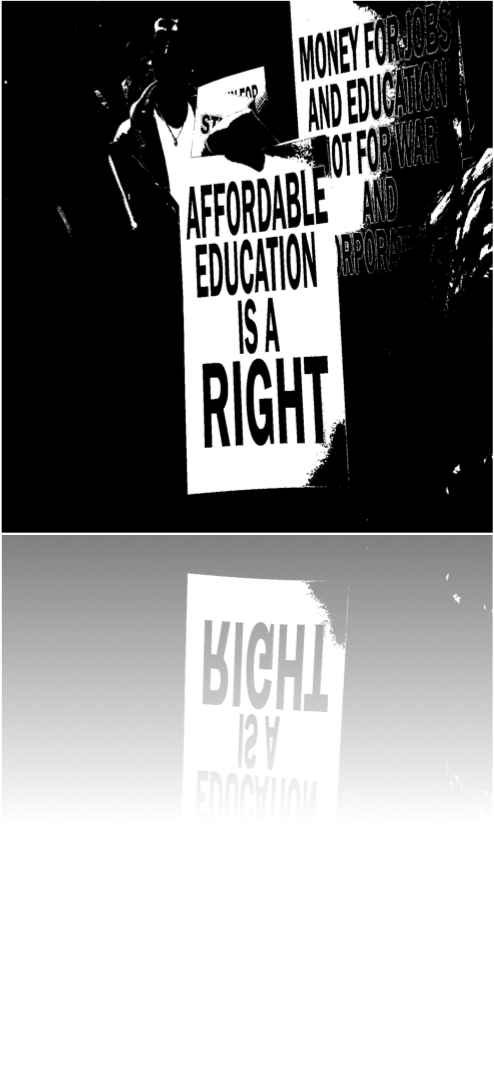
Habitus, Individual Agency, and the Cultural Capital Model
Formulated by sociologist Pierre Bourdieu, the concept of habitus explicates the correlation between disparity and academic success, while providing the rationale behind the cultural capital model. The latter framework posits that individuals accrue various forms of capital, be it cultural, social, economic, or academic, through multiple occurrences, subsequently converting said capital in order to facilitate social mobility (Kezar, 2011). A student’s academic efforts may thereby be impeded because of the dearth of cultural and social capital exhibited among the lower socio-economic demographic (Martinez et al., n.d.).
The former type of capital would, in this instance, pertain to knowledge as to the advantages of attending university, and the proper manner in which to prepare and gain entrance to a post-secondary institution (Astin & Oseguera, 2004). Considering the delayed financial gratification of earning a college degree, information on such matters may be non-existent in the immediate surroundings of disparaged individuals, who must prioritize a steady income over continuing education. This absence of cultural capital would, in turn, necessitate the acquisition of social capital, which would comprise networks of mentors, counselors, recruiters, and outreach programs (Martinez et al., n.d.). Through these mediums, low-income students would be able to obtain relevant information as to the value of higher academia, and means through which to gain admittance into this realm.
Institutionalized Hurdles
Despite the potential of individual agency, low-income students remain confronted by institutional hurdles, especially where access to post-secondary education is concerned. Anxiety over the cost of higher schooling may serve as the greatest deterrent for disadvantaged persons, whose median family incomes are incapable of matching climbing tuition rates (Long & Riley, 2007). Financial relief can be attained through government assistance, such as the Free Application for Federal Student Aid (FAFSA), but many eligible students are unable to navigate the detailed forms, consequently choosing to either accumulate loans, or entirely forfeit attending college. Research by the American Council on Education reveals that in the year 2000, over 850,000 students qualified to receive federal aid did not finalize the required paperwork, thereby foregoing any possibility of financial backing (King, 2004).
While billions of dollars are devoted to financial aid each year, a majority of these assistance-based programs, which include the Georgia HOPE Scholarship (Helping Outstanding Students Educationally) and the Pell Grant, have recently concentrated their support towards middle and upper class applicants. Furthermore, many programs have elected to allocate funding based upon a student’s merit. Considering the chronic academic under-preparedness of students in the lower income bracket, this aspect favors affluent students, who score higher on standardized exams and actively participate in more extra-curricular activities. Funding is thereby diverted from the disparaged to those already on stable financial ground (Long & Riley, 2007).
The lack of academic preparedness serves as a detriment beyond limiting financial aid possibilities. While in high school, a majority of low-income students are bereft of academic ambition, placing increased value on economic incentives, such as maintaining a part-time job, instead of seeking supplemental academic instruction. This prioritization hence negates a student’s possible enrollment in more rigorous classes, such as Advanced Placement courses, designed to help fulfill certain college requirements and improve chances of passing the standardized university entrance exams (Martinez, Klopott, Swail, & Williams, n.d.). Consequently, upon entering college, these same individuals, who exhibit minimal grade level proficiencies, are met with extensive costs and lengthened college tenures because they are obligated to complete developmental or remedial courses prior to engaging in college level instructions (Long & Riley, 2007).

Possible Resolutions
Unlike the trend towards greater inequity may suggest, increasing college access for low-income students is not an impossibility if various measures are enacted. Firstly, there is a significant need for simplification of the college admissions and financial aid processes. Beyond waiving application fees and offering proper accommodations to complete the myriad of necessary documents, such as computer labs staffed with knowledgeable guides, information pertaining to these crucial contracts must be more appropriately disseminated. If clarity can be imparted upon the heavy-worded content that students and their families encounter, then perhaps the anxiety and suspicion towards said processes may be relieved (College Board, 2007).
Secondly, merit-based aid should be reconsidered, since this manner of financial assistance only aggravates the severe inequalities manifest on college campuses by rewarding students who have already been granted academic privileges (Johnson, 2012). In order to mend the economic rift of higher education, action must be taken to encourage the awarding of need-based aid. However, the federal based Pell Grant, established precisely for this intent, is currently struggling to support rising numbers of qualified students, and is facing potential funding cuts over the next year (Cohen, 2010).
The easing of financial worries alone will although not balance the economic inequalities found on university campuses. Moreover, mentoring and outreach programs should amplify their roles in aiding low socioeconomic standing individuals with realizing their academic potential. Within higher education, federally funded programs, such as TRiO, offer a variety of student oriented services, including advising and tutoring. These initiatives also urge low-income students to seek involvement with administrators, faculty, and campus activities (Walpole, 2003). Yet, these accommodations, which are circumscribed to a university setting, are more focused on retaining disadvantaged students than enabling college access (Kezar, 2011).
Programs directed more towards the latter objective have evidenced improvements in the acceptance and success rates of young college hopefuls. These organizations, including GEAR UP (Gaining Early Awareness and Readiness for Undergraduate Programs) and Project GRAD (Graduation Really Achieves Dreams), apart from promoting post-secondary attendance and completion, enable striving youths by providing scholarships, encouraging local partnerships between high schools and universities, and by offering social and academic support. Within a Bourdieuian framework, these efforts help students of low socioeconomic standing accrue more of the cultural and social capital befitting a future in academia. But growing concerns over institutional revisions, such as changes of the present nationwide core curriculum, are encumbering the abilities of these programs to precipitate a significant change (Martinez et al., n.d.).
Related Literature
Implications
While the aforementioned efforts, including the dismantling of admission and financial aid obstacles, the increase in need-based funding, and promoting the roles of outreach programs, are directed primarily towards achieving greater equity on college campuses, the consequences of promoting the educational advancement of low-income students will prove far more extensive. Consider, firstly, the correlation between college demographics, especially those of elite institutions, and the constitution of American society: essentially, there is no resemblance between one and the other. The selective admission policies of higher academia, which value wealth over aptitude, have created a disillusioned student populace, wherein diversity is almost non-existent (Marx, 2011).
The graduates of these universities will then find themselves immersed into a world in which their limited cultural perspectives and exposure will greatly restrict the possible impact of their actions on the future of this nation. However, if college admissions processes were to favor the capable minds of lower socioeconomic standing, then higher education would experience undoubted betterment. Attestation to the benefits of such a reciprocal relationship can be found in the reforms enacted by Anthony Marx, former president of Amherst College. By admitting persons of varied backgrounds and experiences, his institution witnessed an increase in learning standards, a more favorable campus atmosphere, and greater financial support by the college’s alumni (Marx, 2011).
Finally, the advantages of implementing nondiscriminatory admission practices would extend outside the microcosm of the college campus. The selectivity once exhibited by so many influential universities is no longer a mark of excellence among post-secondary institutions. Instead, it reveals the outdated practices of equating affluence to talent. But, by providing a more diverse populace with means of obtaining a college education, students, regardless of economic standing, would have the chance of upward social mobility. Said mobility would undermine the structured opportunities of a stratified nation and allow society to become more reflective of its whole.
Copyright Lilith Eden 2012. All rights reserved.
References for Further Reading
The college keys compact. (2007). The College Board.
Astin, A.W., & Oseguera, L. (2004). The declining “equity” of American higher education. The Review of Higher Education, 27(3), 321-341. doi:10.1353/rhe.2004.0001
Carnevale, A.P., & Strohl, J. (2011). Our economically polarized college system: separate and unequal. Chronicle of Higher Education, 58(6), B32-B35. Retrieved from http://libcatalog.atu.edu:2060/ehost/detail?sid=cbdae8b9-0b6f-4f93-af4e- af5f9d8bc2c1%40sessionmgr104&vid=5&hid=11&bdata=JnNpdGU9ZWhvc3QtbGl2ZQ%3d%3d#db= afh&AN=66540039
Cohen, J. (2010, April 20). The case for need-based college aid [Web log post]. Retrieved from http://higheredwatch.newamerica.net/blogposts/2010/the_case_for_need_based_college_aid-30802
Johnson, A. (2012, January 17). The need for need-based aid [Web log post]. Retrieved from http://www.fsg.org/KnowledgeExchange/Blogs/EducationYouth/PostID/228.aspx
Kezar, A. (2011). Recognizing and serving low-income students in higher education: an examination of institutional policies, practices, and culture. Taylor & Francis. Retrieved from http://books.google.com/books?id=OAH8_QjvqN0C&pg=PA127&lpg=PA127&dq=low- income+student+habitus&source=bl&ots=rPj0cn2_Ra&sig=taTI8uVb5EhNjPCUlPG0ophoHlc&hl=en &sa=X&ei=Dbc3T9HnCMO4tweNqcSyAg&ved=0CDYQ6AEwAg#v=onepage&q=TRIO&f=false
King, Jacqueline E. (2004) “Missed Opportunities: Students who do not Apply for Financial Aid,”
American Council on Education Issue Brief.
Leopold, N. (2010). Colleges can do more to find ‘strivers’. Chronicle of Higher Education 57(5), B23-B25. Retrieved from http://libcatalog.atu.edu:2060/ehost/detail?sid=cbdae8b9-0b6f-4f93-af4e- af5f9d8bc2c1%40sessionmgr104&vid=8&hid=11&bdata=JnNpdGU9ZWhvc3QtbGl2ZQ%3d%3d#db= afh&AN=54119900
Long, B.R., & Riley, E. (2007). Financial aid: a broken bridge to college access? Harvard Educational Review, 77(1), 39-63. Retrieved from http://ejournals.ebsco.com/Direct.asp?AccessToken=46996Y98K6J1CLEU5L6PJSU9L6Y28P65C&Sho w=Object
Martinez, M., Klopott, S., Swail, W.S., & Williams, A. (n.d.). School reform and college access success: a review. Prepared for Pathways to College Network & Pacific Resources for Education and Learning (PREL). Retrieved from https://docs.google.com/viewer?a=v&q=cache:Bi_Y- gsUaNAJ:www.pathwaystocollege.net/pdf/HowisSchoolReform_abridged.pdf+academic+preparedness +of+lowincome+students&hl=en&gl=us&pid=bl&srcid=ADGEESj68xVlBnoRA_651GG_Yk05eHbxG SSktYVeWt9IveG3I0CAXeA_y_8lKIBFfoncHWgNALhRlaE752W- jnXicNaFAz8t3oDLmzTZy6yoFUQfdr_yKioaNVF4mwg4kpvcRuUoFUVw&sig=AHIEtbRePeq69IW YZFmtcQH0rxqtkTf-HQ
Marx, A. (2011). The economic divide on campuses is a national tragedy. Chronicle of Higher Education, 58(6), B26-B29. Retrieved from http://libcatalog.atu.edu:2060/ehost/detail?sid=cbdae8b9-0b6f-4f93- af4eaf5f9d8bc2c1%40sessionmgr104&vid=11&hid=11&bdata=JnNpdGU9ZWhvc3QtbGl2ZQ%3d%3d #db =afh&AN=66540037
Walpole, M. (2003). Socioeconomic status and college: how SES affects college experiences and outcomes. The Review of Higher Education, 27(1), 45-73. doi: 10.1353/rhe.2003.0044

